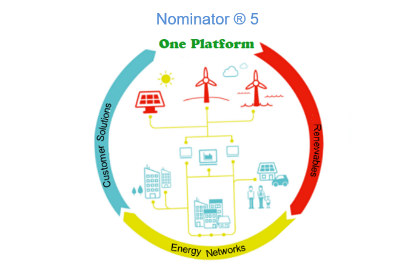Opinion Piece - A Return to the Demand Side
The recent spikes in UK energy prices, coupled with capacity constraints, should rekindle the debate on the need for more demand-side participation, especially from the domestic and SME sectors. There is a huge amount of energy consumption that could be moved or reduced if only there was some kind of transparent price signal to which the consumers in these sectors could respond, and the technology to enable them to respond with minimal effort.
To date, these consumers have had a very limited choice of tariffs that incentivise their energy usage with reference to wholesale market price signals. The move towards market half-hourly settlement (MHHS) is usually identified as the major enabler for the widespread introduction of innovative tariffs for demand-side response and auto-generation. Unfortunately, the introduction of MHHS is proceeding at a glacial pace, so the market could well run out of time by the time these tariffs become widespread.
Patience on the lack of progress is wearing very thin among domestic, community energy, and SME consumers, as pointed out by Dr M F Earthey (Director of Product Strategy - Matrica) at the recent Energy Trading Week Conference. To date, the industry has been very wary about offering the small end of the market any exposure to volatile wholesale prices. Indeed, the tariffs that do offer this exposure apply some kind of cap or safety-net that reduces the upside risk to the consumer (and thus their appeal to the Supplier). Dr Earthey argued that in his 30 years of experience in the energy markets, domestic and SME consumers are a lot more market-savvy than the industry gives them credit for, so upside-risk should not be used as an excuse to delay innovation due to the application of overly-paternalistic protection mechanisms.
Accepting that the delay in introducing MHHS prevents the immediate introduction of a full range of innovative tariffs, modern technology clearly offers some kind of interim, ‘soft’ demand-side management. For example, the website of the Supplier offering innovative tariffs runs a bot that detects if the device used to access their website is fully charged, and if it is, messages the user to recommend disconnecting it from the mains for a while. This alerting/advisory messaging functionality can easily be extended to monitoring any wi-fi enabled device on the home network, including devices spending half their lives on standby.
Ultimately, we must hope that all generations of smart meters will become an integral part of the home network, such that they can send messages to devices that people actually use, rather than remain confined to their own little screens. With the proportion of home-working looking set to remain permanently higher, the response to innovative tariffs’ price signals needs to be managed from the device actually used for work, not from a stand-alone little box stuck on a wall.
